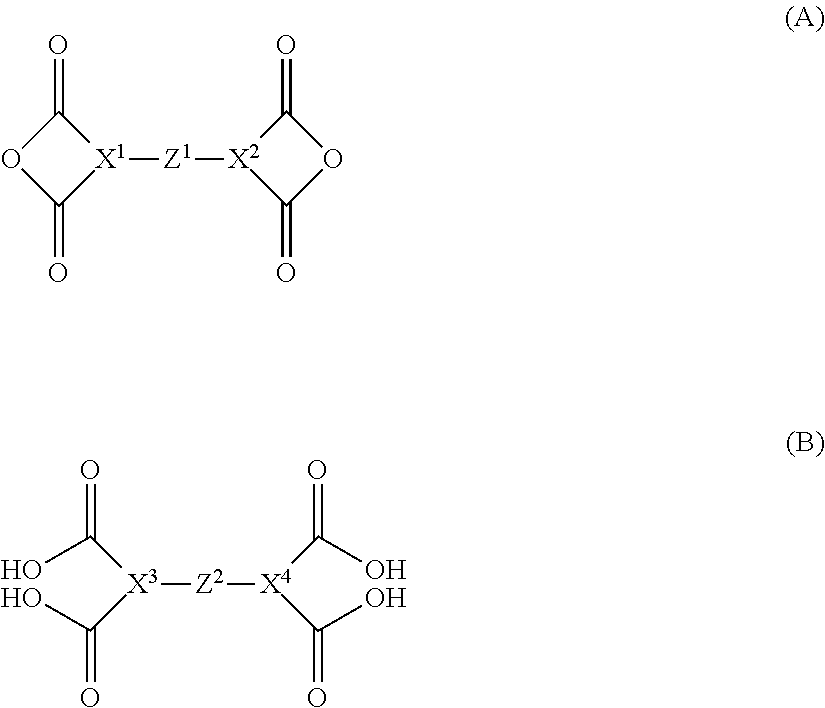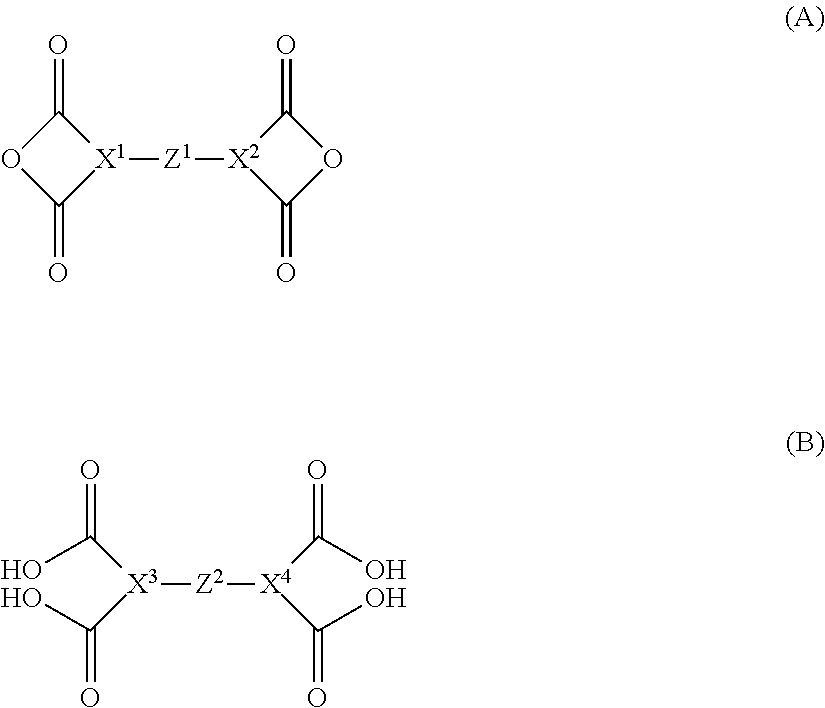Polyester resin for toners, method for producing same, toner and method for producing toner
a technology of polymer resin and toner, which is applied in the field of polymer resin for toner, a method for producing the same, and toner, which can solve the problems that the generation of voc may affect the health of the user or the environment, and achieve the effects of reducing tvoc, excellent hot-offset resistance, and easy removal
- Summary
- Abstract
- Description
- Claims
- Application Information
AI Technical Summary
Benefits of technology
Problems solved by technology
Method used
Image
Examples
example 1-1
[0217]Tetravalent carboxylic acid (a), polyvalent carboxylic acid (b), and polyhydric alcohol (c) which have a charge composition shown in Table 1, and tetra-n-butoxy titanium as a polymerization catalyst were placed in a polymerization device equipped with a distillation column. The amount of polymerization catalyst was set to 500 ppm with respect to the amount of tetravalent carboxylic acid (a) and polyvalent carboxylic acid (b).
[0218]Subsequently, the temperature raising was started and the mixture was heated so that the temperature in the reaction system became 265° C. The temperature was kept at this level, and an esterification reaction was carried out until no distillate of water is left from the reaction system. Subsequently, the temperature in the reaction system was set to 235° C., the inside of the polymerization device was decompressed, and a condensation reaction was carried out until the torque of a stirring blade reached a value showing a desired softening temperature...
examples 1-2 to 1-9
[0223]Polyester resins for toner were produced in the same manner as in Example 1-1 except that the charge composition was changed as shown in Table 1, and various measurements and evaluations were carried out. The results are shown in Table 2.
example 2-1
[0275]Tetravalent carboxylic acid (a), polyvalent carboxylic acid (b), and polyhydric alcohol (c) which have a charge composition shown in Table 5, and tetra-n-butoxy titanium as a polymerization catalyst were placed in a polymerization device equipped with a distillation column. The amount of polymerization catalyst was set to 1,000 ppm with respect to the amount of tetravalent carboxylic acid (a) and polyvalent carboxylic acid (b).
[0276]Subsequently, the temperature raising was started and the mixture was heated so that the temperature in the reaction system became 265° C. The temperature was kept at this level, and an esterification reaction was carried out until no distillate of water is left from the reaction system. Subsequently, the temperature in the reaction system was set to 235° C., the inside of the polymerization device was decompressed, and a condensation reaction was carried out until the torque of a stirring blade reached a value showing a desired softening temperatu...
PUM
| Property | Measurement | Unit |
|---|---|---|
| boiling point | aaaaa | aaaaa |
| acid value | aaaaa | aaaaa |
| storage elastic modulus G | aaaaa | aaaaa |
Abstract
Description
Claims
Application Information
 Login to View More
Login to View More - R&D
- Intellectual Property
- Life Sciences
- Materials
- Tech Scout
- Unparalleled Data Quality
- Higher Quality Content
- 60% Fewer Hallucinations
Browse by: Latest US Patents, China's latest patents, Technical Efficacy Thesaurus, Application Domain, Technology Topic, Popular Technical Reports.
© 2025 PatSnap. All rights reserved.Legal|Privacy policy|Modern Slavery Act Transparency Statement|Sitemap|About US| Contact US: help@patsnap.com



